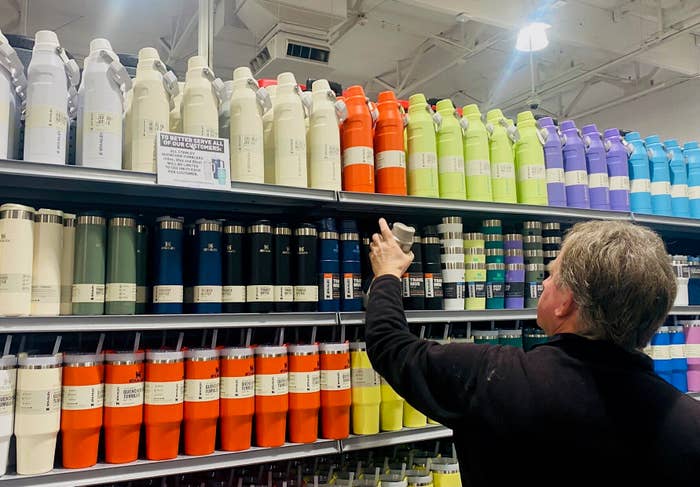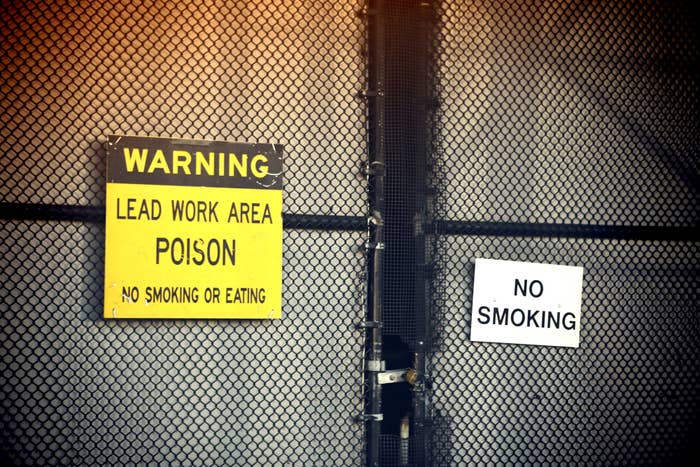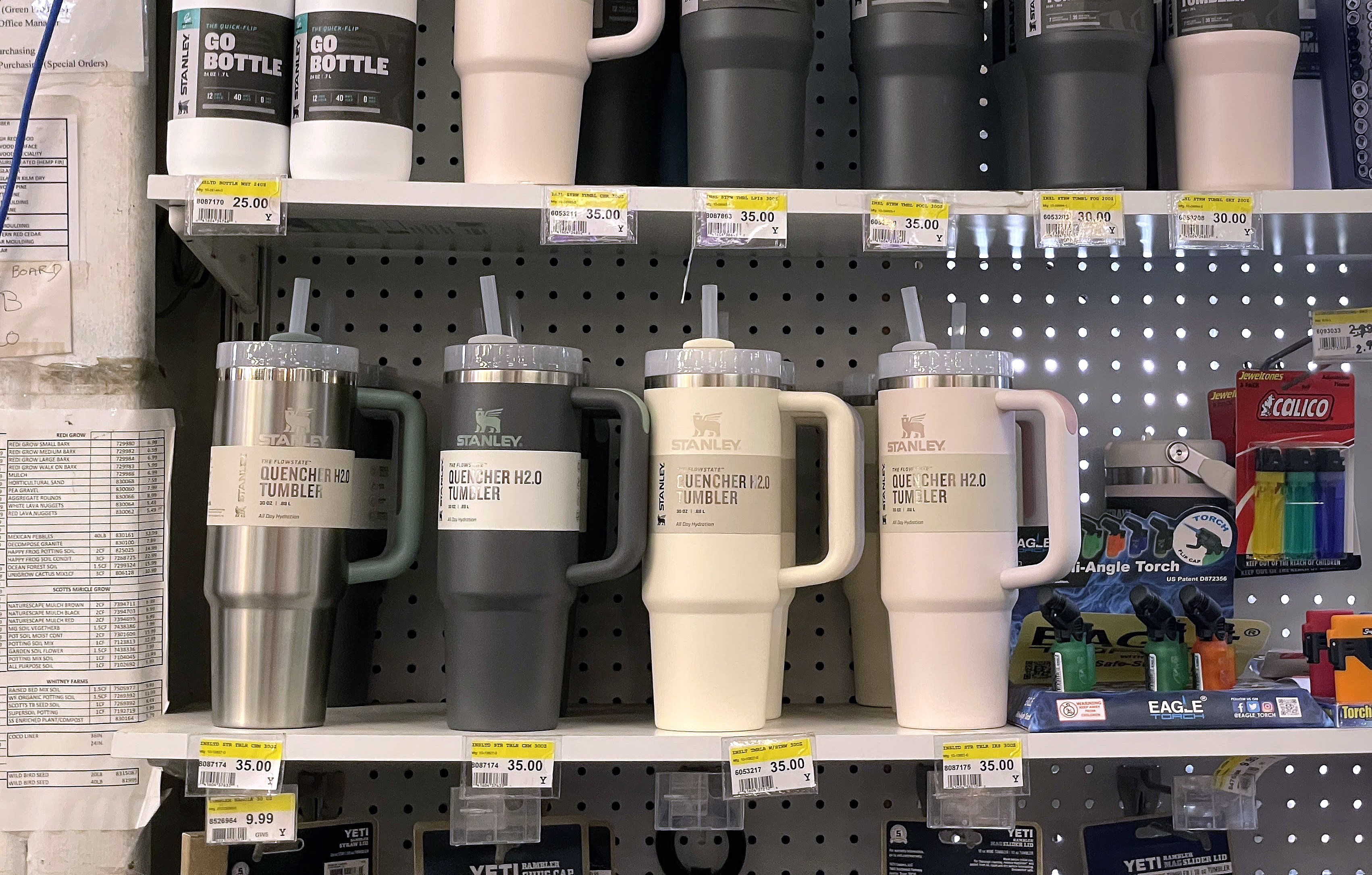
Stanley cups can’t seem to stay out of the spotlight. The popular 40-ounce drinking cups have captured the hearts (and wallets) of millennial and Generation Z shoppers, and are famous for selling out in minutes. But concerns over tumblers containing lead, a naturally occurring metal found in the Earth’s crust, have made headlines recently, leaving people distressed about their beloved cups.
On social media, people are putting their travel tumblers to the test with at-home lead testing kits, and the results are mixed. While some people’s cups have come up clean, others have discovered that their tumblers — including those made by Stanley and other brands — contain lead.
Lead is toxic when ingested and can contribute to numerous health conditions, such as anemia, high blood pressure and cognitive deficits. But public health experts say that it’s unlikely you’re going to get sick from drinking out of your average tumbler.
“The risk of these cups is infinitesimally small,” said Dr. Andrew Monte, a professor of emergency medicine and medical toxicology with the University of Colorado Anschutz Medical Center.
“People do not have to be concerned about using these products, though if the cup is severely damaged, and the lead is accessible, throw it out,” Monte told HuffPost.
According to Stanley’s website, its popular drinkware is made with lead, but that part of the cup is tightly sealed off with a durable stainless steel layer.
“Rest assured that no lead is present on the surface of any Stanley product that comes into contact with the consumer nor the contents of the product,” the website states. “In the rare occurrence the base cap of a product comes off due to ordinary use and exposes this seal, it is eligible for our Lifetime Warranty.”
Jack Caravanos, a clinical professor of environmental public health sciences at the NYU School of Global Public Health, personally tested a few Stanley tumblers with an X-ray fluorescence instrument that can detect various metals, and didn’t find any lead. This suggests that the metal is buried deep within the cup, he said.
According to Monte, the cup would have to be incredibly damaged for its lead plug to pop out of the drinking canister.
“This type of damage would have to be so severe that the canister wouldn’t hold liquid anymore, so this doesn’t represent a realistic possibility,” Monte said.
Still, public health experts argue that products people use for eating or drinking shouldn’t contain any lead. While the risk of being exposed to lead is low, there’s still a chance that you could ingest lead if a product cracks or breaks, according to Dr. Maryann Amirshahi, a co-medical director of the National Capital Poison Center.
“If the product is defective or damaged, or if the seal breaks down over time, then that is a cause for concern,” Amirshahi said. “It is important to remember that a broken seal may not always be obvious.”
Why It’s Dangerous To Ingest Lead

We’re all exposed to traces of lead in the environment, and the health effects of lead largely depend on your age and how much lead you’re exposed to.
For adults, being exposed to small amounts of lead is unlikely to cause any immediate health issues, Caravanos said. In severe cases, however, it can trigger seizures, brain swelling or even death, according to Amirshahi — but it’s very unlikely that you’d be exposed to anything close to this when drinking from a standard tumbler.
The real concern is when people are exposed to lead on a regular basis. The metal can bioaccumulate in the body over time, and chronic lead exposure can contribute to kidney dysfunction and other problems.
“It’s a bit of a hidden hazard,” Caravanos said.
Lead is particularly dangerous for children, as even tiny levels in the blood can lead to cognitive delays, attention deficits and other issues, according to the Centers for Disease Control and Prevention. While a minuscule amount of lead may not have a meaningful impact on an adult’s health, it can have lasting neurological effects in kids.
Why Do Companies Still Use Lead?
Stanley products aren’t the only water tumblers that use the metal. Last year, various children’s cups were recalled because they contained levels of lead that exceeded the federal lead content ban.
Research from the 1990s found that the “use of lead in packaging presents an unnecessary risk to public health.” The big question, then, is: Why do these companies continue to use lead if it comes with a health risk? According to Caravanos, lead is likely inexpensive and easy to use — plus, the Food and Drug Administration doesn’t ban it. The metal seals materials together, and it can withstand high heat and pressures in a dishwasher, unlike some alternative adhesives.
Many manufacturers have moved away from using lead in recent years because it tends to get bad press. But the fact that some companies are still using it? “It’s a bad marketing decision,” Caravanos said. “It’s a bit of an outrage that a tumbler like this has lead in it,” he added, even though it’s probably perfectly legal according to FDA standards.
Is It Safe To Use Your Tumbler?

The consensus among environmental health experts is that zero lead would be the ideal amount (and that’s particularly important for children, as the CDC notes).
But according to Caravanos, you probably don’t need to toss out your reusable tumbler. “It’s a manageable risk,” he said, adding that the cups don’t present a serious public health threat. If you have one, it’s worth inspecting the bottom cap from time to time to ensure that there is no cracking, warping or damage, and you should pay attention to recalls.
Finally, if you’ve been thinking about getting a new tumbler or if yours is damaged, consider opting for a brand that doesn’t seal the cup with lead, Amirshahi said. At the end of the day, the safest bet is using lead-free products. Her advice is simple: “If you are concerned, replace it.”
This post originally appeared on HuffPost.
